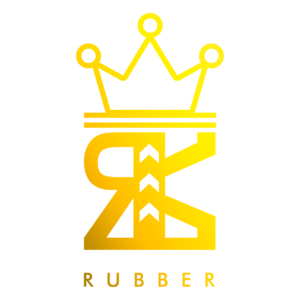Top 3 HVAC Vibration Isolation Matting Options
The top three HVAC vibration isolation matting options include neoprene, cork and rubber composites, and Sorbothane. Neoprene offers robust resilience, thermal stability, and minimal water absorption, making it ideal for long-term vibration attenuation. Cork-rubber composites combine compressibility and elasticity, providing effective damping alongside superior thermal insulation and resistance to environmental aging. Sorbothane delivers exceptional energy absorption and shock attenuation in critical applications. Understanding the specific material properties and performance benefits can guide optimal vibration isolation selection for diverse HVAC environments.
Key Takeaways
- Neoprene mats offer excellent vibration damping, durability, and resistance to environmental stress, making them an industry standard for HVAC isolation.
- Cork/rubber composite mats combine cork’s compressibility with rubber’s elasticity for effective vibration absorption and thermal insulation in HVAC applications.
- Sorbothane mats provide superior energy absorption and shock attenuation, ideal for critical HVAC installations requiring high-performance vibration control.
- Neoprene and cork/rubber mats maintain structural integrity and damping performance under cyclic loading and varying temperature conditions.
- Choosing between neoprene, cork/rubber, and sorbothane depends on the balance of load capacity, environmental resilience, and vibration isolation needs.
Neoprene Vibration Isolation Mats
Neoprene vibration isolation mats frequently serve as a preferred solution in HVAC systems due to their excellent resilience and damping properties. These mats exhibit superior neoprene durability, maintaining structural integrity under repetitive dynamic loads and environmental stressors. Their closed-cell formulation guarantees minimal water absorption, preserving material performance in humid conditions common to HVAC environments. Thermal resistance is another critical attribute; neoprene mats withstand temperature fluctuations without significant degradation, enabling consistent vibration isolation across operational ranges. Additionally, their inherent elasticity contributes to effective attenuation of transmitted vibrations, reducing noise and mechanical wear. These combined characteristics make neoprene mats an industry standard for isolating vibration in HVAC units, balancing longevity with performance to protect sensitive equipment and structural components.
Cork and Rubber Composite Mats
In HVAC vibration isolation applications, cork and rubber composite mats combine the natural compressibility of cork with the elasticity and durability of rubber to achieve effective damping characteristics. These mats leverage cork resilience for sustained performance under cyclic loading while providing superior thermal insulation compared to rubber-only options. Their construction enables efficient vibration energy absorption and reduced noise transmission. Key technical advantages include:
- High load-bearing capacity with minimal deformation
- Enhanced cork resilience maintaining structural integrity
- Effective thermal insulation reducing heat transfer
- Resistance to oils, solvents, and environmental aging
- Compatibility with various HVAC equipment footprints
This synergy results in reliable vibration isolation where both mechanical damping and temperature management are critical, making cork and rubber composite mats a preferred solution within demanding HVAC systems.
Sorbothane Vibration Damping Pads
Among advanced materials for vibration isolation in HVAC systems, Sorbothane vibration damping pads offer unique viscoelastic properties that provide superior energy absorption and shock attenuation. These pads exhibit exceptional Sorbothane durability, maintaining mechanical integrity under cyclic loading and prolonged stress conditions commonly encountered in HVAC applications. Their molecular structure enables effective dissipation of vibrational energy, reducing transmitted noise and wear on equipment components. Sorbothane temperature resilience further enhances performance, allowing stable damping characteristics across a wide temperature range, typically from -30°C to 90°C, without material degradation. This thermal stability guarantees consistent vibration isolation in fluctuating environmental conditions. Consequently, Sorbothane damping pads are a preferred solution for critical HVAC installations requiring high-performance vibration control, combining longevity with reliable operation under mechanical and thermal stresses.
Frequently Asked Questions
How Do Vibration Isolation Mats Affect HVAC Energy Efficiency?
Vibration isolation mats with optimized compressive strength minimize HVAC equipment vibration, reducing mechanical losses. Low thermal conductivity prevents heat transfer, enhancing system energy efficiency by maintaining operational temperatures and reducing unnecessary energy expenditure in HVAC units.
Can Vibration Mats Reduce Noise in Multi-Story Buildings?
Vibration mats effectively reduce noise in multi-story buildings by damping floor resonance caused by HVAC equipment. This mitigation enhances tenant comfort, minimizing transmitted vibrations and airborne noise through structural elements, ultimately improving acoustic performance and occupant satisfaction.
What Is the Typical Lifespan of HVAC Vibration Isolation Mats?
The typical lifespan of HVAC vibration isolation mats ranges from 5 to 15 years, depending on material degradation influenced by environmental conditions and load. Regular inspections inform the replacement cycle to maintain peak vibration dampening performance.
Are Vibration Isolation Mats Resistant to Mold and Mildew?
Vibration isolation mats often feature mold resistant coatings combined with moisture wicking substrates, effectively preventing mold and mildew growth. These materials maintain HVAC system hygiene by minimizing moisture retention and microbial proliferation in demanding environmental conditions.
How Do Temperature Changes Impact Mat Performance?
Temperature changes induce thermal cycling, causing fluctuations in material stiffness of vibration isolation mats. Repeated expansion and contraction can degrade elasticity, reducing isolation efficiency and potentially leading to premature material fatigue or failure under HVAC operational conditions.
Conclusion
To conclude, selecting the best HVAC vibration isolation matting—be it Neoprene, Cork and Rubber composites, or Sorbothane pads—is critical for mitigating mechanical resonance and prolonging equipment lifespan. Each material offers distinct damping properties suited to varying operational demands, ensuring superior vibration attenuation. Ignoring these options would be akin to silencing a jet engine with a whisper; the right matting transforms disruptive vibrations into near imperceptible hums, safeguarding system integrity and enhancing overall performance.
